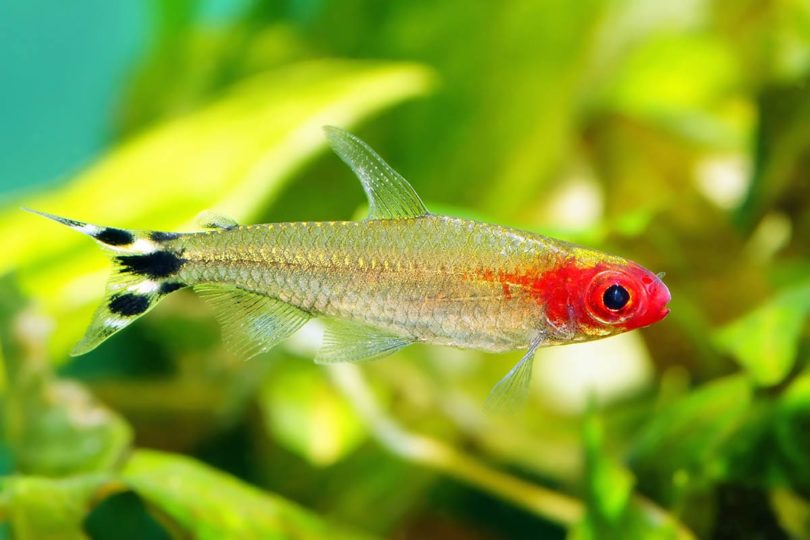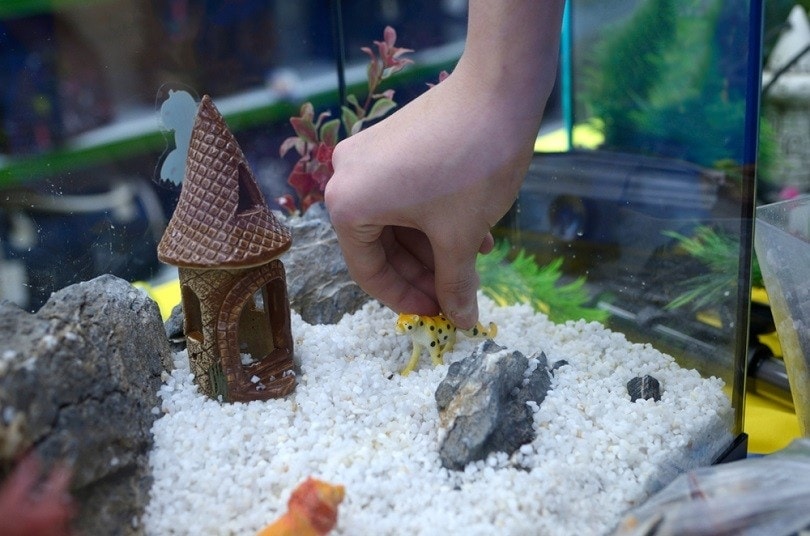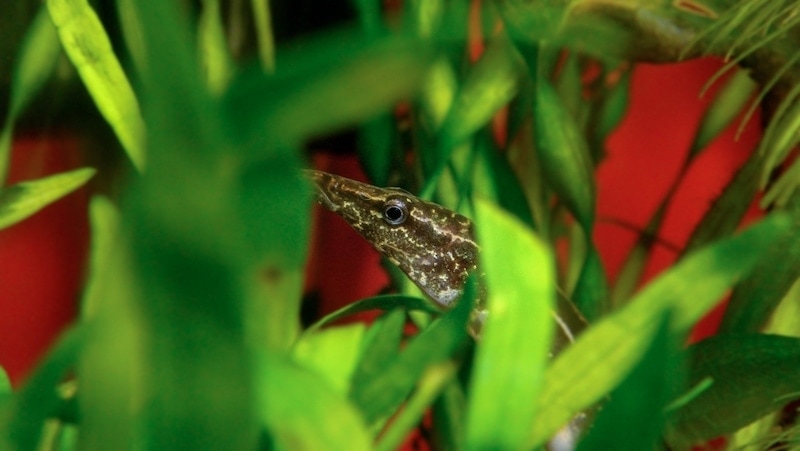How to Tell if an Aquarium Snail is Dead or Just Sleeping: 4 Vet-Approved Methods

Updated on
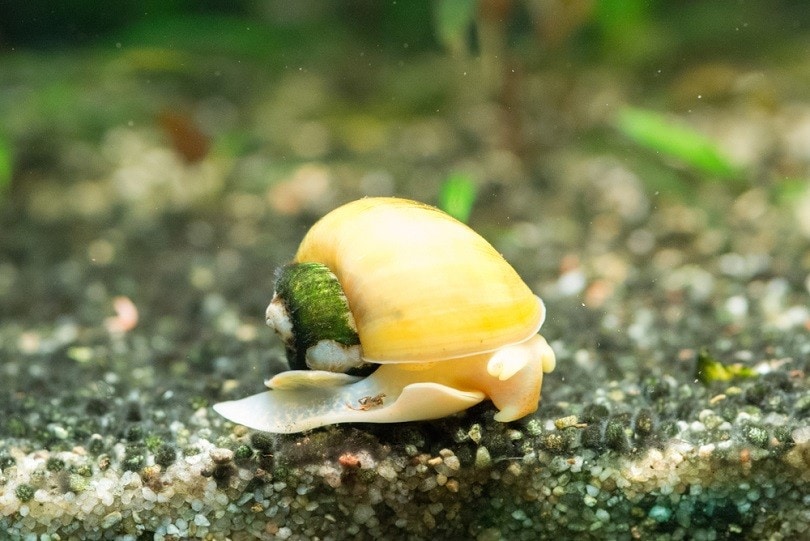
Anyone who has ever kept aquatic snails has found themselves at some point wondering, “Is this snail dead?” Generally, this thought is followed by feeling a little bit silly to ask a question that seems like it should have an obvious answer. The truth of the matter, though, is that it’s not always all that easy to determine if your snail is dead or asleep. Some snails have regular sleeping cycles, and some snails may seem to be awake all the time, and then go for a few days or more without moving.
The odd behavior snails exhibit around sleep can make it exceptionally difficult to tell if they’re asleep or dead. The good news is that there are a few really easy ways to tell the difference.
My Snail Is Floating! Is It Dead?
We’re used to seeing fish float when they die, so seeing a snail floating around the tank without any signs of life may make you think it’s dead right off the bat. However, this behavior isn’t totally uncommon in aquatic snails. Sometimes, they will float after a stressful time, like after being shipped to you or after a great tank escape. If you recently acquired your snail or picked it up off the floor and it’s floating, give it a couple of days to adjust to the environment.
Sometimes, snails will end up with air bubbles in their shells. When this happens, it can lead to floating. Usually, these bubbles will work their way out relatively quickly, but it’s not totally out of the question to spot your snail floating for a couple of days because of this. There’s not a whole lot you can do to help your little friend out when this happens, so just monitor closely, and if it’s been a few days, you can offer tasty morsels close to the face to encourage your snail to come out of its shell. This will hopefully dislodge the air.
My Snail Has Been Sitting on the Tank Floor Without Moving
If you’ve walked by your tank six times today and your snail has been tucked into its shell in the same place every time, you’ve likely started to worry. It’s not uncommon for snails to do this, though! Mystery snails seem especially fond of long, deep naps. Sometimes, you may see your snail tucked up into its shell but in a different part of the tank every time you see it. This may be due to tank mates pushing the shell around, but it can also mean that your snail has been waking up from its nap and stretching its “legs” before going back to sleep.
Excessive sleeping in snails is an odd behavior that you likely don’t expect to see until you’ve seen it. After all, most of us don’t really think of snails having regular sleeping cycles. They do, though! Just like people, fish, and other invertebrates, snails require regular sleep to stay healthy and keep their brain and body in tip-top shape. Sleep encourages growth, proper metabolism and digestion, and strong immunity. Although some snails have a circadian rhythm, others are linked to tidal cycles. Snails linked to tidal cycles might sleep for extended periods of time when initially placed in an aquarium.
If you do notice your snail seeming to sleep a lot, though, or spending a lot of time tucked into its shell, check your water parameters, just to be safe.
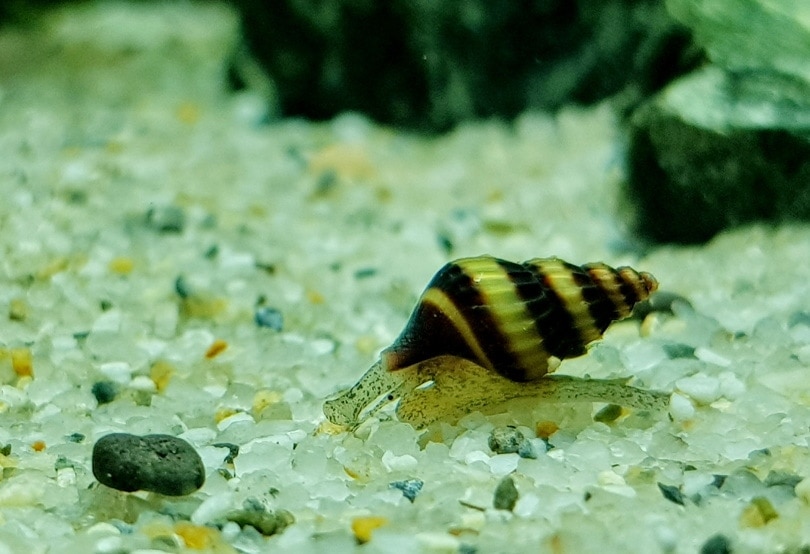
My Snail Has Been Stuck to the Glass Without Moving
If your snail has been clinging to the tank glass for dear life, the good news is that it’s definitely not dead. Dead snails don’t continue holding onto surfaces, so a snail on the glass is almost always living unless it has somehow become wedged between the glass and an item in the tank. If your snail has been clinging to the same place on the glass for hours or days, it’s possible that it’s taking a nap. It’s also possible that it’s not feeling well. Just like if your snail is spending a lot of time sleeping on the tank floor, you should check your water parameters if your snail seems to be spending a lot of time sleeping on the glass and not being particularly active.
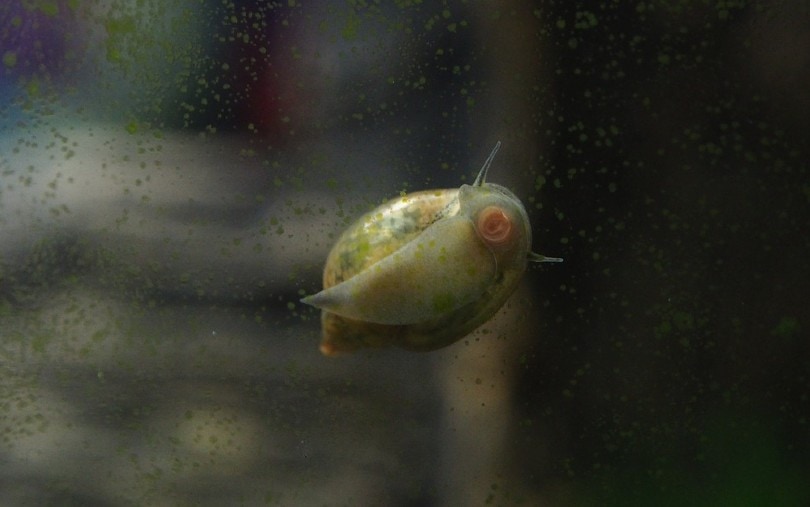
The 4 Easiest Ways to Tell If Your Snail Is Alive or Dead
1. Closely Examine It
Your first clue that your snail may be dead is if it’s not moving and isn’t tucked into its shell. Dead snails are no longer pulling their body into their shell, so the body often seems to flop from the shell. It doesn’t take long for a dead snail’s body to begin coming loose from its shell, so if the body has fully come out of the shell, then your snail is either dead or has suffered a mantle collapse, which is cause for immediate euthanasia to minimize suffering.
If the operculum, or shell-like covering on the foot, seems to be coming loose from the “meat” of the foot, it’s likely your snail is dead or gravely ill.
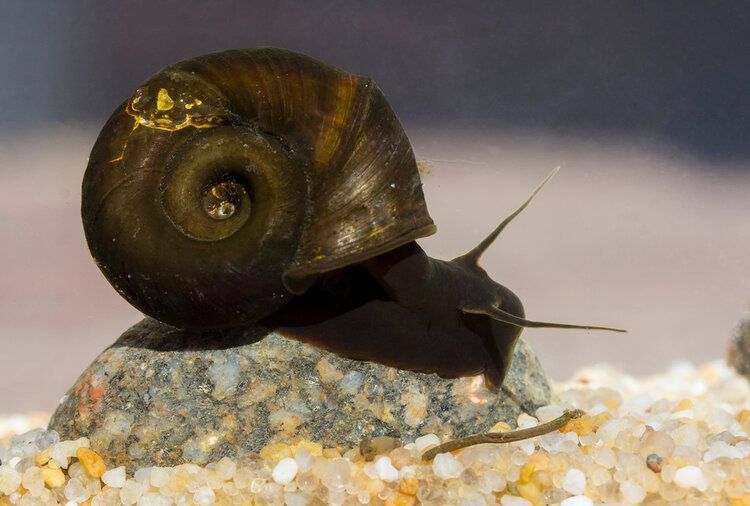
2. Touch It
Pick your snail up and look it over closely. If your snail reacts to your touch or to being removed from the water, then you know it’s alive. Some snails will be difficult, though, and not seem to react. The easiest way you can get your snail to react is to touch its operculum. Living snails will almost always pull away or tuck up into their shell when you touch the operculum.
Do not pull on the operculum (the inside of the shell), though! You can accidentally break the operculum or remove it from the foot of a healthy, living snail. Sometimes, snails will survive if this happens, but it does make them susceptible to predation and infection.
3. Sniff It
Probably the easiest way to immediately tell if a snail is dead or alive is to smell it. Gross, yes, but effective. A live snail should have little to no smell, and if it does have a smell, it will likely be “fishy” or similar to the smell of the aquarium water. A dead snail, on the other hand, will stink. When something dies underwater, it begins rapidly decomposing, so your snail will begin to smell shortly after death.
The smell of a rotting snail is unmistakable, so if you sniff your snail and you aren’t sure about the smell, then it’s either still alive or hasn’t been dead very long.
4. Look For Tank Mates
There are multiple animals routinely kept in aquariums that will happily scavenge something once it has died. Some tank mates will kill snails, so if you notice tank mates like goldfish or loaches seeming to bully your snail, then your snail may be in danger. However, if tank mates that are usually peaceful, like ramshorn snails or dwarf shrimp, are suddenly interested in the meaty part of your snail’s body, then your snail is almost certainly dead. These scavengers are beneficial to the balance in the tank and will help reduce the risk of problems associated with the snail rotting in the tank. However, don’t intentionally leave your dead snail in the tank to be scavenged.
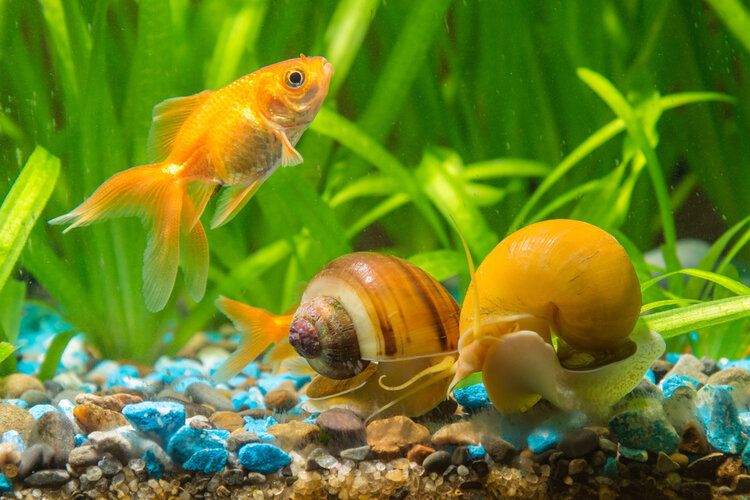
What to Watch For If Your Snail Has Died
There are two major things you should watch for if your snail has died in the tank. The first is any signs of illness and distress in other animals in the tank. If your snail died due to an illness or water quality issue, then you’ll likely start seeing signs in the tank mates. In fish, this can be behaviors like fin clamping and lethargy; in shrimp, it can be behaviors like rapidly swimming around the tank or attempting to jump out; and in other snails, it can be similar behaviors to the ones your snail was exhibiting before it died.
The other major thing to watch for if your snail died in the tank is an ammonia spike. This is especially important to watch for if you aren’t sure how long your snail has been dead in the tank. If you just came back from a long weekend out of town and found your snail dead, then an ammonia spike is a distinct possibility.
As the snail’s body begins to decompose, it will release pollutants into the water. This will lead to a spike in their levels, especially if the beneficial bacteria colonies in the tank aren’t established enough to consume the additional waste in the water. However, this may not be obvious in a large aquarium (because the waste would be quickly diluted in the water). An ammonia spike caused by a cycle crash or another death in the tank could have caused your snail’s death as well, so always check water parameters after a death.
In Conclusion
Determining if your snail is dead or asleep isn’t a glamorous job, but it is necessary sometimes when it comes to snails. They are unusual animals that often exhibit behaviors you wouldn’t expect, like napping and staying in one place for a long time. If you’re ever uncertain if your snail is alive or dead, then you should check it over thoroughly.
Ensure it is not only alive but that it looks healthy. Your snail’s shell should be healthy and free of cracks and pits, the operculum should be strong and in one piece, and a good appetite should be present.
Related Read:
- 10 Types of Freshwater Aquarium Snails (With Pictures)
- Blue Mystery Snail: Care Guide + Where to Buy (Pomacea Diffusa) (with Pictures)
Featured Image Credit: Corneliu LEU, Shutterstock




